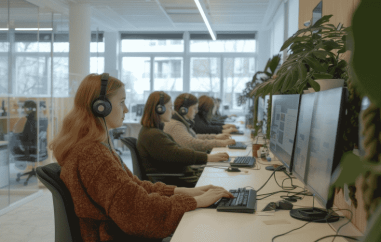How severe corona courses can be better recognized at home
Corona disease is insidious. It progresses in two phases. First, most are overcome by a feeling of weakness. Flu-like symptoms appear, some can no longer taste anything, some lose their sense of smell, and some temporarily lose both. However, what is often less noticeable to most takes place in the second phase of the disease. Pneumonia develops in the body. One feels ill, the body temperature rises, but rarely Corona-infected people also experience shortness of breath. And this suggests a severe course is developing. And therein lies the danger. A visit to the doctor is missed and the infection progresses untreated. As a result, severe damage to the lungs can occur. Experts say that this can be prevented with the help of a pulse oximeter.
Richard Levitan is a professor at Dartmouth College in Hanover, New Hampshire, and a U.S. emergency medicine physician. As early as 2020, when he volunteered to help out against the March Corona wave at Bellevue Hospital in New York City, he realized that potentially fatal pneumonia caused by the virus is often not detected early enough and that more could be done to protect patients from very severe courses. At the time, he described his impressions in a much-discussed guest article for the "New York Times."
The "silent hypoxemia" phenomenon
In numerous examinations of patients who came to Bellevue because of other injuries, doctors detected inflammation of the lung tissue (pneumonia) caused by a corona infection - even in patients without respiratory symptoms. Experts call the phenomenon "silent hypoxemia." "'Silent' because of its insidious, hard-to-detect nature," Levitan writes. That means corona-infected people don't realize their oxygen levels are alarmingly low. Normal oxygen saturation for most people is 94 to 100 percent. Low oxygen levels are an alarm signal.
Levitan recommends a type of early warning system. The pulse oximeter. With this small device, anyone can monitor blood oxygen saturation at home and detect even a severe progression.
How does a pulse oximeter work?
The way pulse oximeter works is simple. The device measures arterial oxygen saturation and pulse. Oxygen saturation indicates the percentage of hemoglobin in the blood that is loaded with oxygen - an important parameter for assessing respiratory function. To perform the measurement, one places a finger in the device. Two light beams of different wavelengths hitting the finger measure the values. The arterial oxygen saturation is calculated and displayed.
The device shows how well oxygen is bound to the red blood cells. If the value is below normal, one should go to the hospital. Covid patients with pneumonia that Levitan observed sometimes had oxygen saturations as low as 50 percent.
Respiratory rate as an indicator
Jens Geiseler, chief physician of pneumology at Klinikum Vest in Marl, takes a more critical view of the use of pulse oximeters at home. The devices for home use are too inaccurate, says the pneumologist on the website "Pulmonologists on the Net." "They are not intended for medical purposes, but for fitness." That also applies to smartwatches and smartphones, he said.
Geiseler advises keeping an eye on breathing rate (number of breaths per minute). "It is the much more sensitive and better parameter for us in such cases." Normally, people breathe 12 to 16 times per minute, he said. "The patients who come to us in the early stages of pneumonia like this often have a respiratory rate of 22 to 24 breaths per minute, but no shortness of breath."
Corona-infected patients should always remain vigilant. Especially when the initial symptoms have subsided after a few days, Geiseler advises. "But I wouldn't call for everyone to get a pulse oximeter like this as a monitoring device, which is really only there for sports," the pulmonologist writes.
Image by Ai Subarasiki
Â






 »
»